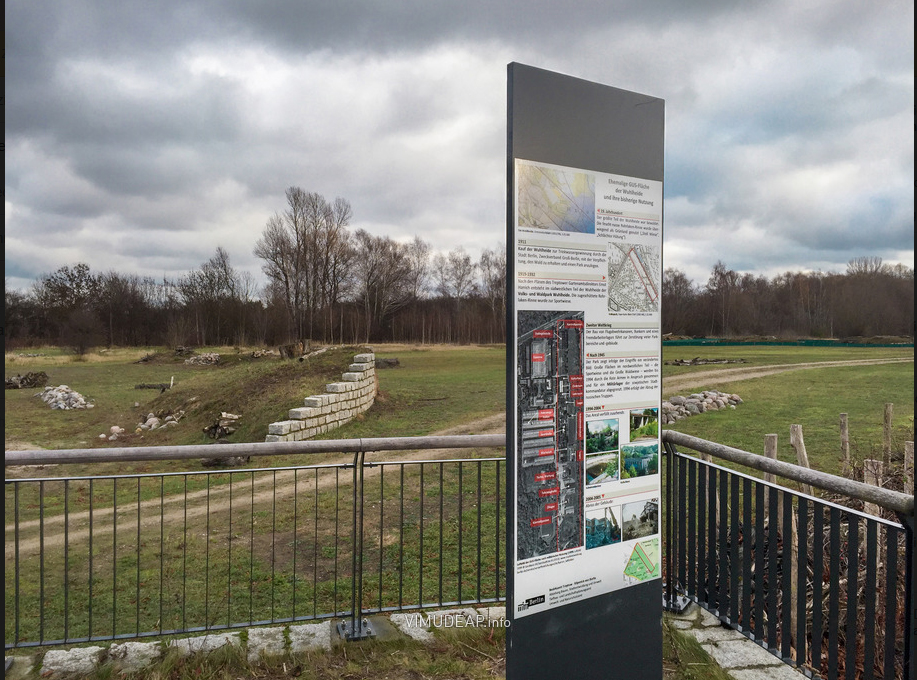
The extent to which bombings and fighting at the end of the war affected the park can no longer be clearly understood. After the war, however, large-scale rubble and debris were buried in the Wuhlheide and trees were cut down due to a lack of fuel.
It is also undisputed that the establishment of the Soviet headquarters in Karlshorst and the associated establishment of a military camp in the former forced labour camp on the sports field as well as an extensive ammunition depot directly opposite, had devastating consequences for the original Public Park. The areas adjacent to the camp were used as a training ground. Over time, the area was successively expanded for military use.
Whether toboggan run, hedge garden, terraces, historic children’s playground or paddling pool – all of this has disappeared or is only visible in rudimentary traces. Thus bit by bit they were gradually forgotten. Whether toboggan run, hedge garden, terraces, historic children’s playground or paddling pool – all of this has disappeared or is only visible in rudimentary traces.
Literature:
Contact
Parkmanagement “Wuhlheide erleben”
Straße zum FEZ 2
12459 Berlin
030-53071-505
kontakt@wuhlheide-erleben.de
Visitor Information
Everything at a glance
You want to be kept up to date about the Wuhlheide? Sign up here for the newsletter and from now on you will not miss any news.
The Park Management Wuhlheide is a project of the Economic Development Department of the Treptow-Köpenick District Office of Berlin in cooperation with the Senate Department for Economic Affairs, Energy and Enterprises within the framework of the economic development programme Gemeinschaftsaufgabe “Verbesserung der regionalen Wirtschaftsstruktur” (GRW), financed from federal and state funds.


For the sake of better readability, we refrain from using both masculine and feminine forms of speech. All personal designations apply equally to all genders.